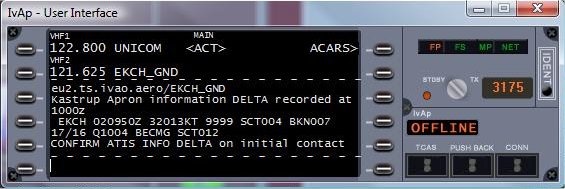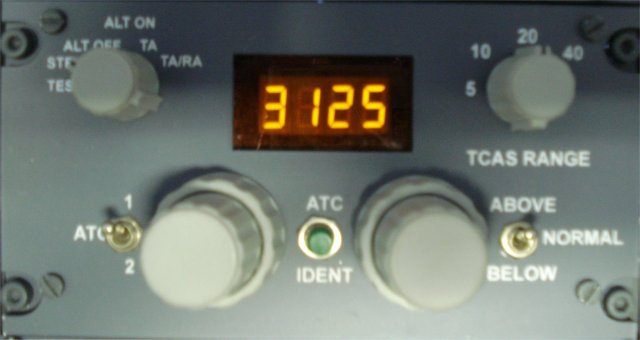IVAO Software Configuration
Introduction
Prior flying the first time online the installation of
the IVAO Virtual Pilot Client is required. The download
package includes TeamSpeak and MTL (Multiplayer Traffic
Library). The package is available for download on the
IVAO website. If you want to control the virtual Pilot
client by hardware some additional integration work
might be required.
IVAO Virtual Pilot
Client - IvAp
IvAp is the IVAO client for pilots. It provides a
user interface and manages data communication
with the IVAO network. Furthermore IvAp coordinates
TeamSpeak for voice communication between pilots and
air traffic controllers.
Offsets are provided for cockpit/panel builders to
allow hardware integration.
Furthermore IvAp offers basic functionality for pushback control and a TCAS display.

The IvAp user interface
The IvAp message window shows the tuned and activated Comm frequency, enables the pilot to send the flight plan, to access ATIS and other flight relevant information. The right section has a readout of the selected squawk code, a switch for the transponder mode (STDBY and TX), and a pushbutton to connect to the IVAO network.
Controlling IvAp from Hardware
As mentioned above IvAp provides some offsets for
the communication with cockpit hardware. IvAp reads
these offsets every second and writes the offsets when the data has
changed. By means of the offsets and some SIOC
scripts I can control the following IvAp functions by the
avionics hardware:
-
Squawk code and transponder mode (STDBY and TA/RA ('Mode Charlie')
-
Squwak ident pushbutton
-
Selection of either VHF1 or VHF 2 as active radio
| For squawk code selection from hardware --> IvAp - Configuration, 'Read/write panel /cockpit offset. |

Transponder panel
with mode selection (STDBY TA/RA), encoders for
squawk code setting, and ATC IDENT push button. TCAS
Range is not used, because it is not supported by
IvAp.
The MIC SELECTOR pushbuttons are used in a different
way than at a real aircraft. With COMM1 / 2 I can
switch between the VHF radios. The selected radio
then gets active for the ATC voice communication. With the PTT1 / 2 push buttons the selection of the headset microphone (CAPT
/ FO) is managed.

The MIC SELECTOR panel with modified push button
functionality.
For IFR clearance, taxi, and take-off I select the Ground as active frequency on the COMM2 (VHF2) radio. The Tower frequency on COMM2 as stand-by. On COMM1(VHF2) the Approach frequency is set as active frequency and Center is on stand-by. All what I have to do from Ground untill handed over to the Center is, I have to push twice the transfer buttons on the radios and switching once from COMM2 to COMM1. That makes the cockpit work much easier and gives more room to pay attention on other things than selecting radio frequencies. During landing I do it vice-versa.
Traffic Collision
Avoidance System
TCAS is to allow pilots to be aware of traffic which
is becoming a threat to the required
minimum separation that ATC should always apply
between different aircraft. On IVAO, the TCAS
function is also very useful, especially when flying
in busy airspace or
without any ATC coverage. I use the TCAS data from
IVAO to show the online traffic
situation around the aircraft at the PM
Navigation Display. For this it is necessary that IvAp
populates the TCAS data:
| --> IvAp - Configuration, check 'Populate TCAS table' |